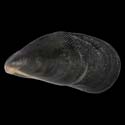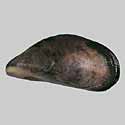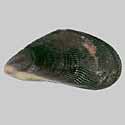Deep-Sea taxon details
Brachidontes exustus (Linnaeus, 1758)
397026 (urn:lsid:marinespecies.org:taxname:397026)
accepted
Species
marine
(of ) Linnaeus, C. (1758). Systema Naturae per regna tria naturae, secundum classes, ordines, genera, species, cum characteribus, differentiis, synonymis, locis. <em>Editio decima, reformata [10th revised edition], vol. 1: 824 pp. Laurentius Salvius: Holmiae.</em> , available online at https://biodiversitylibrary.org/page/726886 [details] Available for editors 
MolluscaBase eds. (2024). MolluscaBase. Brachidontes exustus (Linnaeus, 1758). Accessed through: Glover, A.G.; Higgs, N.; Horton, T. (2024) World Register of Deep-Sea species (WoRDSS) at: https://www.marinespecies.org/deepsea/aphia.php?p=taxdetails&id=397026 on 2024-04-24
Glover, A.G.; Higgs, N.; Horton, T. (2024). World Register of Deep-Sea species (WoRDSS). Brachidontes exustus (Linnaeus, 1758). Accessed at: https://marinespecies.org/deepsea/aphia.php?p=taxdetails&id=397026 on 2024-04-24
original description
(of ) Linnaeus, C. (1758). Systema Naturae per regna tria naturae, secundum classes, ordines, genera, species, cum characteribus, differentiis, synonymis, locis. <em>Editio decima, reformata [10th revised edition], vol. 1: 824 pp. Laurentius Salvius: Holmiae.</em> , available online at https://biodiversitylibrary.org/page/726886 [details] Available for editors 
taxonomy source Bennett, K. F., Reed, A. J. & Lutz, R. A. (2011). DNA barcoding reveals <i>Brachidontes</i> (Bivalvia: Mytilidae) from two ecologically distinct intertidal habitats on Long Key, Florida Keys, are cryptic species, not ecotypes. <em>The Nautilus.</em> 125(2): 63-71., available online at https://www.biodiversitylibrary.org/page/50437905 [details]
context source (Introduced species) Katsanevakis, S.; Bogucarskis, K.; Gatto, F.; Vandekerkhove, J.; Deriu, I.; Cardoso A.S. (2012). Building the European Alien Species Information Network (EASIN): a novel approach for the exploration of distributed alien species data. <em>BioInvasions Records.</em> 1: 235-245., available online at http://easin.jrc.ec.europa.eu [details] Available for editors
context source (MSBIAS) MEDIN. (2011). UK checklist of marine species derived from the applications Marine Recorder and UNICORN. version 1.0. [details]
context source (Deepsea) Natural History Museum, London (NHM): Collections Management Database System. [details]
basis of record Huber, M. (2010). <i>Compendium of bivalves. A full-color guide to 3,300 of the world's marine bivalves. A status on Bivalvia after 250 years of research</i>. Hackenheim: ConchBooks. 901 pp., 1 CD-ROM. (look up in IMIS) [details]
additional source Turgeon, D. D., W. G. Lyons, P. Mikkelsen, G. Rosenberg, and F. Moretzsohn. 2009. Bivalvia (Mollusca) of the Gulf of Mexico, Pp. 711–744 in Felder, D.L. and D.K. Camp (eds.), Gulf of Mexico–Origins, Waters, and Biota. Biodiversity. Texas A&M Press, Colleg [details] Available for editors
taxonomy source Bennett, K. F., Reed, A. J. & Lutz, R. A. (2011). DNA barcoding reveals <i>Brachidontes</i> (Bivalvia: Mytilidae) from two ecologically distinct intertidal habitats on Long Key, Florida Keys, are cryptic species, not ecotypes. <em>The Nautilus.</em> 125(2): 63-71., available online at https://www.biodiversitylibrary.org/page/50437905 [details]
context source (Introduced species) Katsanevakis, S.; Bogucarskis, K.; Gatto, F.; Vandekerkhove, J.; Deriu, I.; Cardoso A.S. (2012). Building the European Alien Species Information Network (EASIN): a novel approach for the exploration of distributed alien species data. <em>BioInvasions Records.</em> 1: 235-245., available online at http://easin.jrc.ec.europa.eu [details] Available for editors
context source (MSBIAS) MEDIN. (2011). UK checklist of marine species derived from the applications Marine Recorder and UNICORN. version 1.0. [details]
context source (Deepsea) Natural History Museum, London (NHM): Collections Management Database System. [details]
basis of record Huber, M. (2010). <i>Compendium of bivalves. A full-color guide to 3,300 of the world's marine bivalves. A status on Bivalvia after 250 years of research</i>. Hackenheim: ConchBooks. 901 pp., 1 CD-ROM. (look up in IMIS) [details]
additional source Turgeon, D. D., W. G. Lyons, P. Mikkelsen, G. Rosenberg, and F. Moretzsohn. 2009. Bivalvia (Mollusca) of the Gulf of Mexico, Pp. 711–744 in Felder, D.L. and D.K. Camp (eds.), Gulf of Mexico–Origins, Waters, and Biota. Biodiversity. Texas A&M Press, Colleg [details] Available for editors
 Present
Present  Inaccurate
Inaccurate  Introduced: alien
Introduced: alien  Containing type locality
Containing type locality
From regional or thematic species database
Introduced species vector dispersal in Irish part of the North Atlantic Ocean (Marine Region) : Other [details]Introduced species vector dispersal in United Kingdom part of the Celtic Sea (Marine Region) : Debris: transport of species on human generated debris [details]
To Barcode of Life (16 barcodes)
To Biodiversity Heritage Library (25 publications)
To Conchology (Brachidontes exustus)
To Conchology (Brachidontes exustus)
To Conchology (Brachidontes exustus)
To European Nucleotide Archive (ENA)
To GenBank (265 nucleotides; 207 proteins)
To Global Biotic Interactions (GloBI)
To Information system on Aquatic Non-Indigenous and Cryptogenic Species (AquaNIS)
To USNM Invertebrate Zoology Mollusca Collection
To ITIS
To Biodiversity Heritage Library (25 publications)
To Conchology (Brachidontes exustus)
To Conchology (Brachidontes exustus)
To Conchology (Brachidontes exustus)
To European Nucleotide Archive (ENA)
To GenBank (265 nucleotides; 207 proteins)
To Global Biotic Interactions (GloBI)
To Information system on Aquatic Non-Indigenous and Cryptogenic Species (AquaNIS)
To USNM Invertebrate Zoology Mollusca Collection
To ITIS











